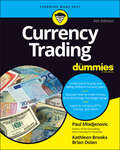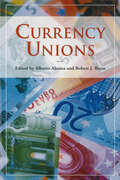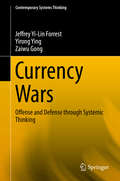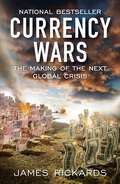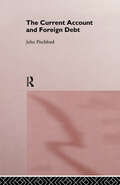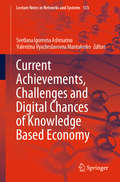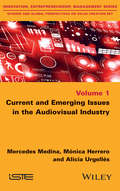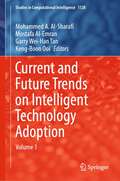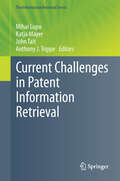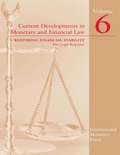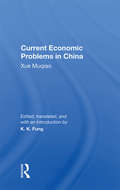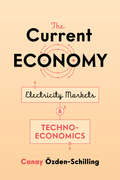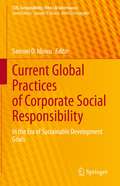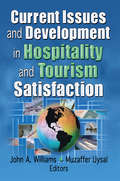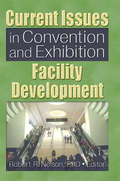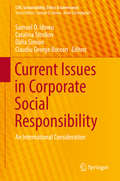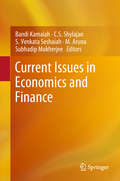- Table View
- List View
Currency Trading For Dummies
by Paul Mladjenovic Kathleen Brooks Brian DolanTrade currencies like a seasoned pro with this friendly, fact-filled guide to the forex market Over $6 trillion changes hands in the foreign exchange market every day. You can jump straight into the action with expert guidance from the hands-on Currency Trading For Dummies. You’ll learn how the foreign exchange market works, what factors influence currency values, and how to understand financial data. When you’re ready to create your own game plan for trading currencies, you’ll be able to build it around your investment objectives, experience level, and risk appetite. You’ll also find details on the latest trends in currency trading, including currency ETFs, cryptocurrencies, and currency options. From essential newcomer knowledge to advanced positioning advice, Currency Trading For Dummies offers straightforward instruction that helps you: Source data and market intelligence, employ technical analysis, and use the latest tech to find the most lucrative trading opportunities Understand the most recent Securities and Exchange Commission (SEC) rules and regulations governing currency trading Avoid common pitfalls and mistakes made by novice and experienced currency traders Recognize profitable opportunities in the world of ETFs, currency options, and cryptocurrencies Successful currency trading is within your grasp. This accessible roadmap to trading mastery provides the foundational knowledge you need to create a structured, winning strategy and conquer the forex market.
Currency Unions
by Alberto Alesina Robert J. BarroCurrency Unions reviews the traditional case for flexible exchange rates and "countercyclical"—that is, expansionary during recessions and contractionary in booms—monetary policy, and shows how flexible exchange rate regimes can better insulate the economy from such real disturbances as terms-of-trade shocks. The book also looks at the pitfalls of flexible exchange rates—and why fixed rates, particularly full dollarization—might be a more sensible choice for some emerging-market countries. The contributors also detail the factors that determine the optimal sizes of currency unions, explain how currency union greatly expands the volume of international trade among its members, and examine the recent implementation of dollarization in Ecuador.
Currency Wars: Offense and Defense through Systemic Thinking (Contemporary Systems Thinking)
by Jeffrey Yi-Lin Forrest Yirong Ying Zaiwu GongThis book uses systemic thinking and applies it to the study of financial crises. It systematically presents how the systemic yoyo model, its thinking logic, and its methodology can be employed as a common playground and intuition to the study of money, international finance, and economic reforms. This book establishes theoretical backings for why some of the most employed interferences of the market and empirical experiences actually work. It has become urgent for economists and policy makers to understand how international speculative capital affects the economic security of various nations. By looking at the issues of monetary movement around the world, this book shows that there are clearly visible patterns behind the flows of capital, and that there are a uniform language and logic of reasoning that can be powerfully employed in the studies of international finance As shown in this book, many of the conclusions drawn on the basis of these visible patterns, language, and logic of thinking can be practically applied to produce tangible economic benefits. Currency Wars: Offense and Defense through Systemic Thinking is divided into six parts. The first part addresses issues related to systemic modeling of economic entities and processes and explains how a few policy changes can adjust the performance of the extremely complex economy. Part II of the book investigates the problem of how instabilities lead to opportunities for currency attacks, the positive and negative effects of foreign capital, and how international capital flows can cause disturbances of various degrees on a nation's economic security. Part III examines how a currency war is initiated, why currency conflicts and wars are inevitable, and a specific way of how currency attacks can take place. In Part IV, the book shows how one nation can potential defend itself by manipulating exchange rate of its currency, how the nation under siege can protect itself against financial attacks by using strategies based on the technique of feedback, and develops a more general approach of self-defense. Part V focuses on issues related to the cleanup of the disastrous aftermath of currency attacks through using policies and reforms. Finally the book concludes in Part VI as it analyzes specific real-life cases and addresses the ultimate problem of whether or not currency wars can be avoided all together.
Currency Wars: The Making of the Next Global Crisis
by James RickardsIn 1971, President Nixon imposed national price controls and took the United States off the gold standard, an extreme measure intended to end an ongoing currency war that had destroyed faith in the U.S. dollar. Today we are engaged in a new currency war, and this time the consequences will be far worse than those that confronted Nixon. Currency wars are one of the most destructive and feared outcomes in international economics. At best, they offer the sorry spectacle of countries' stealing growth from their trading partners. At worst, they degenerate into sequential bouts of inflation, recession, retaliation, and sometimes actual violence. Left unchecked, the next currency war could lead to a crisis worse than the panic of 2008.Currency wars have happened before-twice in the last century alone-and they always end badly. Time and again, paper currencies have collapsed, assets have been frozen, gold has been confiscated, and capital controls have been imposed. And the next crash is overdue. Recent headlines about the debasement of the dollar, bailouts in Greece and Ireland, and Chinese currency manipulation are all indicators of the growing conflict.As James Rickards argues in Currency Wars, this is more than just a concern for economists and investors. The United States is facing serious threats to its national security, from clandestine gold purchases by China to the hidden agendas of sovereign wealth funds. Greater than any single threat is the very real danger of the collapse of the dollar itself.Baffling to many observers is the rank failure of economists to foresee or prevent the economic catastrophes of recent years. Not only have their theories failed to prevent calamity, they are making the currency wars worse. The U. S. Federal Reserve has engaged in the greatest gamble in the history of finance, a sustained effort to stimulate the economy by printing money on a trillion-dollar scale. Its solutions present hidden new dangers while resolving none of the current dilemmas.While the outcome of the new currency war is not yet certain, some version of the worst-case scenario is almost inevitable if U.S. and world economic leaders fail to learn from the mistakes of their predecessors. Rickards untangles the web of failed paradigms, wishful thinking, and arrogance driving current public policy and points the way toward a more informed and effective course of action.
A Currency We Can Call Our Own: Populism, Banking Crises, and Exchange Rate Crises in Argentina, 1946-2002
by Rafael Di TellaThe case describes Argentina's struggle to establish a credible monetary system under populist pressures and the recurrent use of exchange rate stabilization plans. It focuses on two episodes where there was "too little money" in the economy: during the hyperinflation episodes during the late 1980's-when money demand collapsed and the early 2000's when the supply of money collapsed under a hard currency peg.
Current Account and External Sustainability in the Baltics, Russia, and Other Countries of the Former Soviet Union
by Donal McgettiganCurrent account developments in the Baltics, Russia, and other countries of the former Soviet Union (FSU).
The Current Account and Foreign Debt
by John PitchfordIt is generally assumed that current deficits are intrinsically bad and in need of correction. The Current Account and Foreign Debt argues that this is not always the case. The author analyses a broad range of issues in support of this argument. These include: * Approaches to current account balance * Short run issues * Longer run issues * Policy The book can be read as an integrated whole, or alternatively, each chapter can be consulted without reference to the others. The Current Account and Foreign Debt provides the counterbalance to a common misapprehension in economic theory. It will be a valuable guide for all those interested in international monetary theory.
Current Account Determinants for Oil-Exporting Countries
by Hanan MorsyA report from the International Monetary Fund.
Current Account Developments in New Member States of the European Union: Equilibrium, Excess, and EU-Phoria
by Jesmin RahmanA report from the International Monetary Fund.
Current Account Imbalances in the Southern Euro Area
by Florence Jaumotte Piyaporn SodsriwiboonA report from the International Monetary Fund.
Current Accounts in a Currency Union
by Jörg Decressin Emil StavrevA report from the International Monetary Fund.
Current Achievements, Challenges and Digital Chances of Knowledge Based Economy (Lecture Notes in Networks and Systems #133)
by Svetlana Igorevna Ashmarina Valentina Vyacheslavovna MantulenkoThis book is based on research from Russia, Hungary, Bulgaria, Great Britain, Switzerland and the Czech Republic on issues related to knowledge-based economy development. The idea for this book was developed during three international conferences on digitalization: VI, VII and VIII International Scientific Weeks, organized by Samara State University of Economics (Samara, Russia) in 2018–2020. It is an initiative by the scientific and business organizations in the Samara Region and their Russian and international partners to analyze the current digitalization of social-economic systems, the problems and perspectives of this process, and its role in the creation and development of a new type of economy and new quality of human capital. All the contributions focus on the search for effective ways of adapting to the new digital reality and are based analyses of international statistics, and data from specific companies, educational institutions and governmental development programs.The book explores a variety of topics, including • Knowledge and Information as Basic Values of a New Economic Paradigm;• Information Technologies for Ensuring Sustainable Development of Organizations;• Augmented Reality, Artificial Intelligence and Big Data in Education and Business;• Digital Platforms and the Sharing Economy;• Potential of Digital Footprints in Economies and Education; • Sociocultural Consequences of Digitalization.
Current and Emerging Issues in the Audiovisual Industry
by Alicia Urgellés Mercedes Medina Mónica HerreroThis book focuses on the challenges of competition in television broadcasting markets. How is the evolution from a two-sided market to platform economics reshaping competition in television broadcasting? How are new market dynamics changing competition for content creation and acquisition and the revenue streams? Will content remain king? Or will new competitive dynamics undermine the sustainable creation of high quality content, especially in small media markets?
Current and Future Trends on Intelligent Technology Adoption: Volume 1 (Studies in Computational Intelligence #1128)
by Mohammed A. Al-Sharafi Mostafa Al-Emran Garry Wei-Han Tan Keng-Boon OoiThis book explores current and future trends in adopting intelligent technologies, such as the metaverse, social technologies, FinTech applications, and blockchain, among individuals and organizations. The edited book includes empirical and review studies primarily focusing on these issues. This focus aids scholars in conducting future research in the domain and identifying possible future developments of emerging technologies. The empirical studies in the book utilize recent and advanced analytical techniques for data analysis.
Current Challenges in Patent Information Retrieval (The Information Retrieval Series #29)
by Katja Mayer Mihai Lupu Anthony J. Trippe John TaitIntellectual property in the form of patents plays a vital role in today's increasingly knowledge-based economy. This book assembles state-of-the art research and is intended to illustrate innovative approaches to patent information retrieval.
Current Developments in Monetary and Financial Law: Restoring Financial Stability The Legal Response, Volume 6
by International Monetary FundA report from the International Monetary Fund.
Current Developments in Monetary and Financial Law, Vol. 4
by International Monetary FundThe papers in this volume are based on the presentations made at the ninth biennial seminar for legal advisers of central banks, 24 May - 4 June 2004, held by the Legal Department and the Institute of the International Monetary Fund (IMF). The seminar covered a broad range of topics: activities of the IMF; sovereign debt restructuring; money laundering and the financing of terrorism; financial system and banking supervision; conflicts of interest and market discipline in the financial sector; insolvency.
Current Developments in Monetary and Financial Law, Volume 5
by International Monetary FundA report from the International Monetary Fund.
Current Economic Problems In China
by Kwok-Kwan FungAn analysis of the PRC's current economic problems and a critical evaluation of the nation's efforts to solve them, this book brings together papers and speeches by Xue Muqiao, one of China's most prominent economists and one of its key spokesmen for liberal economic reform. Xue addresses such issues as commune and brigade enterprises; employment a
The Current Economy: Electricity Markets and Techno-Economics
by Canay Özden-SchillingElectricity is a quirky commodity: more often than not, it cannot be stored, easily transported, or imported from overseas. Before lighting up our homes, it changes hands through specialized electricity markets that rely on engineering expertise to trade competitively while respecting the physical requirements of the electric grid. The Current Economy is an ethnography of electricity markets in the United States that shows the heterogenous and technologically inflected nature of economic expertise today. Based on ethnographic fieldwork among market data analysts, electric grid engineers, and citizen activists, this book provides a deep dive into the convoluted economy of electricity and its reverberations throughout daily life. Canay Özden-Schilling argues that many of the economic formations in everyday life come from work cultures rarely suspected of doing economic work: cultures of science, technology, and engineering that often do not have a claim to economic theory or practice, yet nonetheless dictate forms of economic activity. Contributing to economic anthropology, science and technology studies, energy studies, and the anthropology of expertise, this book is a map of the everyday infrastructures of economy and energy into which we are plugged as denizens of a technological world.
Current Global Practices of Corporate Social Responsibility: In the Era of Sustainable Development Goals (CSR, Sustainability, Ethics & Governance)
by Samuel O. IdowuThis book addresses the status quo of Corporate Social Responsibility practices and their development since 2008. How have things changed in the practice of CSR? What new opportunities and challenges have arisen? The book reports on an international set of cases and case studies on how CSR is practiced at business and organizations in various countries. It analyzes country-specific and industry-specific issues, as well as general global issues in connection with the United Nations’ Sustainable Development Goals. The contributions gathered here provide comprehensive information on CSR for both practitioners and researchers around the globe.
Current Issues and Development in Hospitality and Tourism Satisfaction
by Muzaffer Uysal John A WilliamsStay ahead of your customers as their service expectations change! In Current Issues and Development in Hospitality and Tourism Satisfaction, experts from the field explore customer satisfaction strategies, examining both the long-term and short-term results. This vital tool shows you new and effective approaches for understanding customer satisfaction and providing quality service at all levels of the hospitality and tourism industry. Hospitality and tourism faculty and students as well as professionals will find this book useful for improving and providing quality service management. This book illustrates the complex relationship between customer and service provider, offering practical advice and techniques for maximizing consumer contentment. Current Issues and Development in Hospitality and Tourism Satisfaction contains models for meeting-and even surpassing-consumer expectations to increase the value of the customer&’s experience. This essential resource includes various methods for managers to anticipate consumer needs and perceptions, reducing dissatisfaction. This book helps you: incorporate existing and alternative measurements of satisfaction measure and improve service quality create and maintain social interaction linkages between staff and customer identify the destination performance of your hotel and other destinations or attractions evaluate consumer satisfaction with lodging services increase cross-cultural service satisfaction and much more! Tables and figures throughout the text help demonstrate the strategies, and bibliographies at the end of each chapter offer further reading. While there are other books that focus on customer satisfaction, Current Issues and Development in Hospitality and Tourism Satisfaction is rare in that it covers satisfaction issues as they apply to both hospitality and tourism.
Current Issues in Convention and Exhibition Facility Development
by Robert R. NelsonIncrease tourism in your community by designing and expanding your local convention and exposition services! This book provides you with solutions to the issues that can arise during the planning and production phases of constructing a facility as part of a community&’s tourism infrastructure. In Current Issues in Convention and Exhibition Facility Development, you&’ll find diverse perspectives from experts in a range of disciplines-including public policy, tourism, convention management, and urban planning. As more communities attempt to gain a share of the economically important meetings and exhibition market, this critical resource will aid university faculty, state and city government officials, and convention and visitors&’ bureaus. Current Issues in Convention and Exhibition Facility Development examines the reasons why certain communities should create convention, event, or tourism centers. The strategies and tips presented in this book can help you select the most appropriate course of action for any given community, from locating the best area to build a center, to allocating space for an exhibition center in an already existing public building. This extensive guide addresses the political, economical, and environmental concerns that can prevent a convention center from ever leaving the drawing board. This book offers you practical advice on a number of concepts, including: linear planning in the first phase-ten questions communities must confront Dedicated Convention Centers (DCC)-the "mother lode" of convention/exhibit tourism capitalizing on the union of two industries-conventions and casinos the definition of "success" in the lifetime of a convention center capturing a share of the market without interfering with local venues the facts behind the illusions-investigating the empirical evidence behind the central myths of the convention and tradeshow industry Current Issues in Convention and Exhibition Facility Development is generously enhanced with figures, tables, models, and case studies to illuminate the facts you need to know to stay competitive.
Current Issues in Corporate Social Responsibility: An International Consideration (CSR, Sustainability, Ethics & Governance)
by Samuel O. Idowu Catalina Sitnikov Dalia Simion Claudiu George BoceanThis book takes a fresh look at current issues in corporate social responsibility (CSR) with a special focus on emerging economies. In particular, it includes dedicated chapters on the theory of CSR, related principles and values, and insights from cross-generational investigations. In turn, the second part of the book examines the relation between financial performance and social responsibility in different industries and types of organizations. The third part presents cases involving emerging economies, and addresses reporting, auditing and accounting, as well as sector-specific issues for e. g. retailing and banking. Lastly, the book tackles the aspects of financial performance and taxation in a number of case studies and practical examples. Overall the book provides cutting-edge insights into the theory and practice of CSR from European countries that can be considered emerging or developing.
Current Issues in Economics and Finance
by Bandi Kamaiah C. S. Shylajan S. Venkata Seshaiah M. Aruna Subhadip MukherjeeThis book discusses wide topics related to current issues in economic growth and development, international trade, macroeconomic and financial stability, inflation, monetary policy, banking, productivity, agriculture and food security. It is a collection of seventeen research papers selected based on their quality in terms of contemporary topic, newness in the methodology, and themes. All selected papers have followed an empirical approach to address research issues, and are segregated in five parts. Part one covers papers related to fiscal and price stability, monetary policy and economic growth. The second part contains works related to financial integration, capital market volatility and macroeconomic stability. Third part deals with issues related to international trade and economic growth. Part four covers topics related to productivity and firm performance. The final part discusses issues related to agriculture and food security. The book would be of interest to researchers, academicians as a ready reference on current issues in economics and finance.
